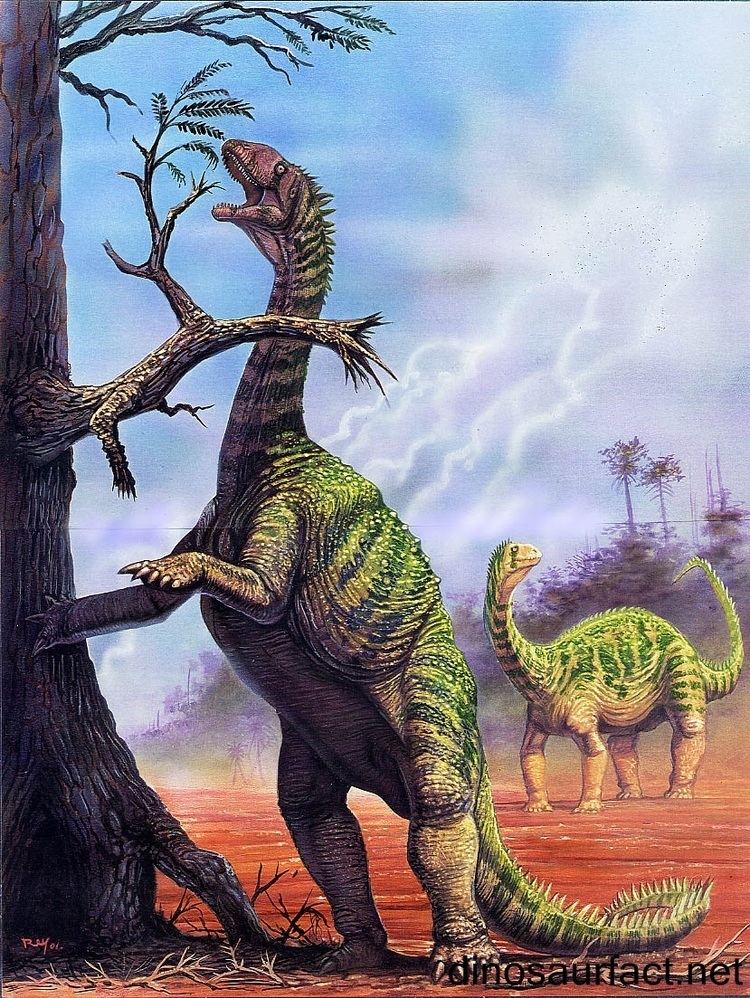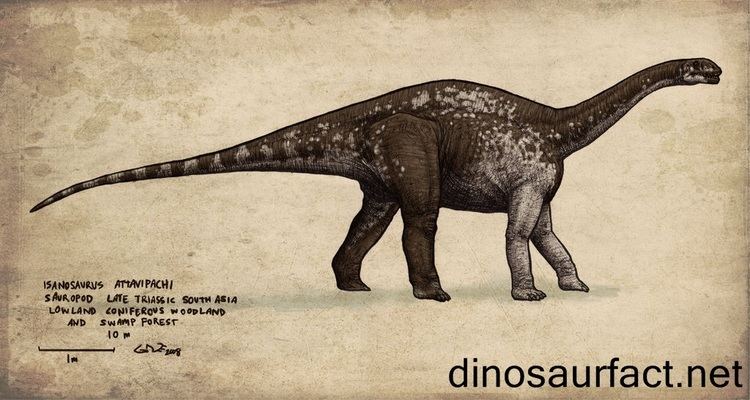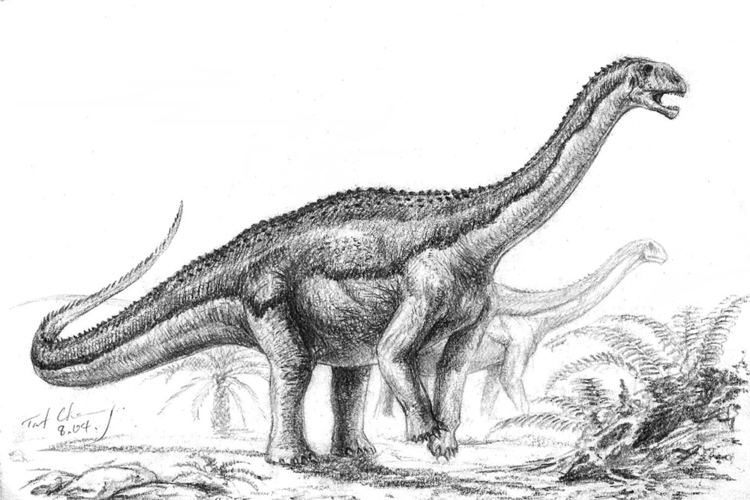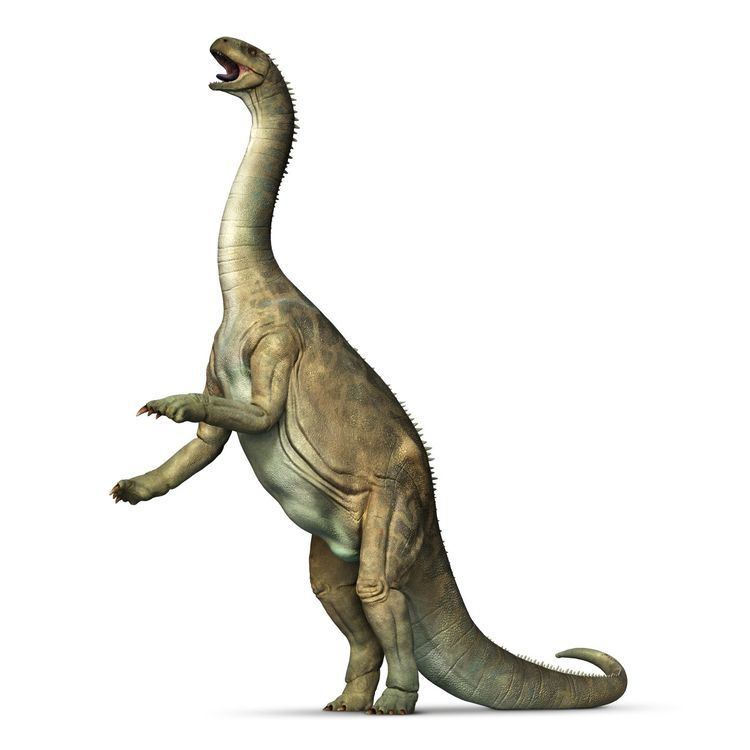Scientific name Isanosaurus attavipachi Rank Genus | Class Sauropsida Species I. attavipachi Phylum Chordata | |
 | ||
Similar Antetonitrus, Blikanasaurus, Gongxianosaurus, Lessemsaurus, Vulcanodon | ||
Isanosaurus (meaning "Isan [north-eastern Thailand] lizard") was one of the first sauropod dinosaurs. It lived approximately 210 million years ago during the Upper Triassic (late Norian to Rhaetian stages) in Thailand. The only species is Isanosaurus attavipachi. Though important for the understanding of sauropod origin and early evolution, Isanosaurus is poorly known. Exact relationships to other early sauropods remain unresolved.
Contents

Description

The only specimen includes a neck vertebra, a back vertebra and part of a second, six tail vertebra, two chevrons, fragmentary ribs, the right sternal plate, the right shoulder blade, and the left thigh bone (femur). This individual may have measured 6.5 metres (21 ft) when alive; the thigh bone measures 76 centimetres in length. However, the vertebral neural arches have been found separated from the vertebral centra, indicating that these elements were not fused with each other; thus, this individual probably was not fully grown.

Early sauropodomorphs were primitively bipedal (two-legged). Isanosaurus, being one of the first sauropods known, already shows a quadrupedal locomotion (with all four legs on the ground). The legs were column-like, as indicated by the robust and straight thigh bone. In prosauropods, but also in the very basal sauropod Antetonitrus, the thigh bone was slightly sigmoidal (S-curved). Also, like in other sauropods, bony processes of the femur were reduced in Isanosaurus; most notably, the lesser trochanter was lacking.

Additional important features can be found in the vertebrae. The neck vertebrae were distinctly opisthocoelous (convex at the front and hollow at the back), forming ball-and-socket joints with neighbouring vertebrae. The tail vertebrae, on the other hand, were amphicoelous (concave at both ends). The dorsal neural spines were very high, like those of some later sauropods, unlike the low prosauropod neural spines. The lateral sides of the vertebrae were concave, but not deeply excavated (a structure known as pleurocoels) as in later sauropods.
Discovery

The specimen was found in dark red sandstone of the Nam Phong Formation near the village of Ban Non Thaworn, in Chaiyaphum Province. When discovered in 1998, the skeleton had unfortunately been mostly eroded away. With regard to vertebrate fossils, the Nam Phong Formation is poorly explored: besides Isanosaurus, only two articulated ischia were found. Whether these ischia belong to Isanosaurus is unclear, because no pelvic bones are preserved in the holotype specimen.
Isanosaurus was described by French palaeontologist Eric Buffetaut and colleagues in 2000. The name is derived from Isan (north-eastern Thailand); the species name honours P. Attavipach, a supporter of palaeontological research in Thailand and former Director General of the Thai Department of Mineral Resources.
